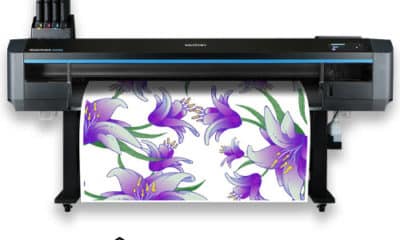Bitcoin, a cryptocurrency, is described as a peer-to-peer payment system and you’ve surely seen it discussed on the news. Blockchain, another type of cryptocurrency, exists because of blockchain technology, which Investopedia describes as a digitized, decentralized, public ledger of transactions. Blockchain is also used to track processes in other, non-currency systems and its proponents say its use will only get bigger. Unlike bitcoin currency, blockchain is a proven, process-recording system, one without risks similar to bitcoin.
LOT’S LIFE
To understand blockchain technology’s use in business is to appreciate that most manufacturing plants use process tracking systems, i.e., a numbered “lot” or “batch” system, to measure their work progressions. These systems document production stages in terms of lots, with each lot containing a fixed number of the same or similar items– 50 widgets, let’s say – that flow in a fabrication line with other lots that, in all, pass through in-plant work stations, to eventually become finished widgets. Plant workers can use paper or computer systems to record each lot as it enters and leaves their production station and by this, management can measure actual production action against pre-set timelines. Although elementary, these systems allow management to evaluate quotas and trace any production problems to a person, machine or department. Today, most manufacturers have upgraded to RFID or similar technology to track production work and all have some type of LAN or WAN tracking software that produces records of events and other critical data.
Essentially, a blockchain is the same thing – a tracking system – but it ties in-plant operations to the entire spectrum of manufacturing activities, just as the bitcoin system records finance transactions worldwide. Via computers and software, cloud-based systems, blockchains can log the stations and actions of any item in its processing transactions, i.e., manufacturing actions, timelines, occurrences and other properties determined by the user group. It can also combine components’ data into finished product files.
Such systems aren’t limited to manufacturing. As an example, consider that a blockchain system could track a complete record of oranges as they move from the California orchards to the marmalade jar on Walmart’s shelf, and then, reading the buyer’s bank-card data, add a purchaser profile that provides feedback to marketers.
Of course, it could also track a faulty bolt on an aircraft’s landing gear and initiate replacement work orders for an entire fleet.
NEVER BREAK THE CHAIN
Blockchain technology comprises two primary components: an arrangement for facilitating and verifying transactions, and a network that maintains a perpetual and commonly available ledger of those transactions. In use, blockchain-distributed technology has possible applications across every kind of digital record and transaction.
Advertisement
Laura Shin, writing for zdnet.com, says blockchain technology is one of the most important technologies to emerge in recent years, and that experts believe it will change our world in the next two decades, as much as has the internet. Shin lists IBM, Microsoft, Walmart, JPMorgan Chase, Nasdaq, Foxconn, Visa and Maersk as firms pursuing blockchain technology.
Blockchainnews.com says Microsoft is working with Mojix, a provider of wide-area RFID solutions, Internet of Things (IoT) software platforms and cloud- and mobile-development services, to offer a blockchain-enhanced system that will allow members of an enterprise supply chain – retailers, suppliers and logistics providers – to view their transactions related to RFID tag readings gained from blockchain-empowered contracts. Meaning, a system that will use RFID triggers to record processes and allow analysts to examine every part of a business process.
Recently, Eastman Kodak Co., dba as Kodak, and WENN Digital announced their partnership to create and operate a photo-tracking blockchain and cryptocurrency enterprise. Kodak’s PR says WENN has expertise in proprietary blockchain development, big data, copyright law, image recognition and post-licensing monetization systems. In Kodak’s system, photographers can register their photos, which are then tracked ad infinitum. Those reusing the photos must purchase and use Kodak’s KODAKCoins to buy use consent. Once paid, the Kodak currency is downloaded to the photographer’s account, less commission to Kodak, of course. I haven’t found where Kodak tells how to exchange its KodakCoins for US dollars.
In my view, Kodak’s system will work like street fair food booths, those where you buy tickets at one stand, so you can buy a hot dog at another. I hate that. I always go home with unused tickets, ones that cost me a buck each. Where does the unused ticket money go? With a blockchain in place, we’d have an answer.


 Business Management1 week ago
Business Management1 week ago
 Women in Signs1 week ago
Women in Signs1 week ago
 True Tales2 weeks ago
True Tales2 weeks ago
 Editor's Note5 days ago
Editor's Note5 days ago
 Maggie Harlow2 weeks ago
Maggie Harlow2 weeks ago
 Line Time1 week ago
Line Time1 week ago
 Product Buying + Technology7 days ago
Product Buying + Technology7 days ago
 News2 weeks ago
News2 weeks ago














